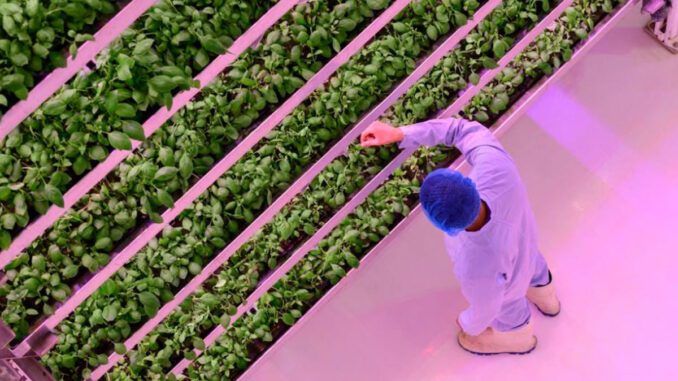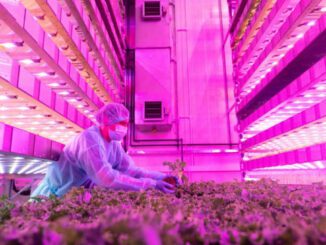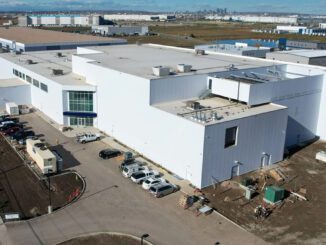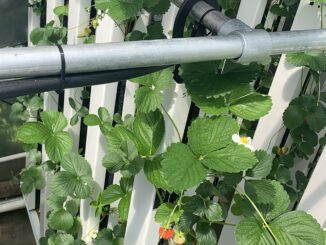
Using Indoor Farming To Protect Food Supplies During Natural Disaster Recovery
Indoor Farming to Protect Food Supplies | Bryan Fried |
Communities across the U.S. need to protect their food supplies against natural disasters. In Florida alone, the Tampa Bay Times reported that agricultural losses from Hurricane Ian could reach $1.9 billion due to destroyed crops. But the agricultural impacts of natural disasters extend beyond hurricanes in Florida.
The drought in California, which is a more gradual natural disaster, has resulted in associated impact costs of $1.3 billion in 2021 and $1.7 billion in 2022. And according to the Los Angeles Times, more than 12,000 people lost their jobs during this span and over 750,000 acres of farmland went fallow, including vital crops such as strawberries, melons, lettuces and tomatoes.
Hail storms in the upper Midwest, fires in the west and tornadoes in the south all contributed to further massive losses in 2022, with some areas like Yellowstone experiencing “500-year events.”
Agricultural operators can implement a range of practices to improve their resiliency against natural disasters. These can include drafting emergency operational plans and taking specific steps such as improving soil to retain more water while maximizing biodiversity and soil health.
Another key move for the agriculture industry to handle natural disasters is to move more production to indoor vertical farming operations. These facilities can hedge against disasters to feed a growing population against climate change-fueled calamities. Below are some best practices when setting up and utilizing the technological advances and methods available with indoor farming.
An Array of Disaster-Resilient Benefits
Vertical indoor farming operations are “disaster-resistant” because they’re operated in controlled environments protected from the elements. Operators can build indoor farming structures in a variety of environments, even reclaimed urban areas. In fact, when choosing a location, indoor farms built near urban centers reduce the need to store farmed produce, cut down on transportation costs and decrease spoilage. You can repurpose existing buildings or build from the ground up and position operations in zones with a variety of challenging environmental conditions.
Indoor farming also produces less pollution and greenhouse gas emissions than comparable traditional farming practices. This reduces the sector’s contribution to climate change, which is a main driver in the intensity, frequency and duration of many of the natural disasters disrupting agriculture.
Indoor farming uses less water than traditional farming practices and greatly reduces the need for herbicides, fungicides or pesticides. Less reliance on these elements means indoor farms can operate even in disrupted supply chain scenarios.
Making It A Cost-Effective Option
While the options are vast, the vertical farming industry is currently focused on higher-priced produce such as strawberries and blueberries because the production of these crops is easily automated and they help with profit margins. Lettuce, peppers, tomatoes and other salad types are some of the best crops you can grow in vertical farms because they grow quickly, are reliable and there’s plenty of demand.
In addition, mint, basil, oregano, parsley, thyme and rosemary are routinely grown for retail distribution. And despite some hurdles in cost, farms like Living Greens, Vertical Roots and other operators are growing leafy greens despite the higher labor requirements since many people use these greens every day.
Other crops being considered in the wake of cooking oil shortages include soy and canola (rapeseed). Typically, crops that mature at 6 feet tall or under in quick, seasonal cycles are best grown indoors because of the yield per square foot which can be obtained and the number of crop cycles possible per year.
I predict that there will be a shift in the types of food groups produced in vertical environments as the industry is still in its early stages. As a part of overcoming its current higher costs, we can expect to see automation, evolution of best practices and a growing need due to natural disaster disruption continue to drive this food production alternative.
Efficiency Through Tech and Automation
The main drivers for developing a “smart” indoor farm are to achieve higher yields with less water and fertilizer consumption, as well as create as much of an automated and hands-off process as possible.
A typical automated or IoT-based indoor farm uses a six-layer framework. This includes the physical layer (hardware facilities), network layer (internet and communication), middleware layer (IoT gateways), service layer (cloud products), analytics layer (big data, predictive analysis, etc.) and user experience layer (yield and farmer experience). At each layer, you can apply various smart tech solutions to reduce labor costs, increase yield and save production time. Choosing the right smart tech for your farming helps optimize the use of resources in improving the commercial viability of your produce. Any way you can find to use less resources also means less operating costs.
Watering and lighting systems fall within the physical layer and are two of the first considerations. Leading options feature software-powered and automated monitoring and analytics but require a significant investment on the front end. Once installed, though, lighting tech can measure soil moisture, temperature, humidity and other variables and then coordinate with the related systems and staff members to make changes. The information produced by smart lighting sensors allows operators to perform advanced analytics so they can measure yields on various parameters and review their outputs quarterly and annually.
I believe the key is to continue to develop and utilize advanced smart software systems that can bring lighting, watering and other conditions together so growers can build a “recipe” of success and then store that information to repeat successful crop cycles based on proven past results. Automation can also be used to plant seeds and harvest and reload beds, reducing operational costs and human error.
All these advances are bringing costs down and making indoor farming an increasingly viable alternative to traditional farming. By improving indoor farming facilities with smart tech, automation and reduced-resource practices, agriculture providers can ensure consistent production for food-insecure and disaster-prone areas.
Such operations not only help areas recover from a natural disaster by ensuring stability and access to food—they also slowly reduce the negative feedback loops of farming’s environmental impacts.
Original Article: https://www.forbes.com/sites/forbesbusinesscouncil/2022/12/23/using-indoor-farming-to-protect-food-supplies-during-natural-disaster-recovery/?sh=49b17e837660



